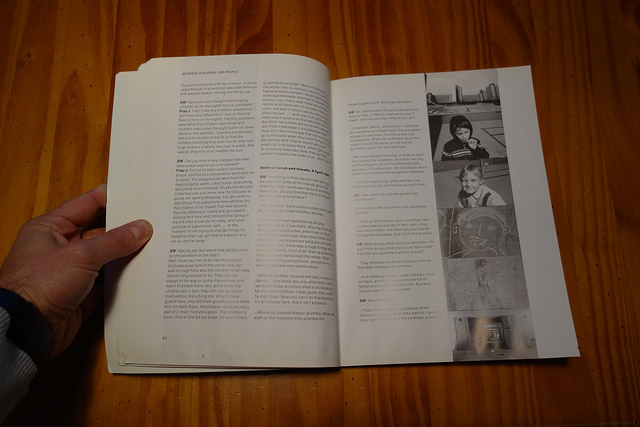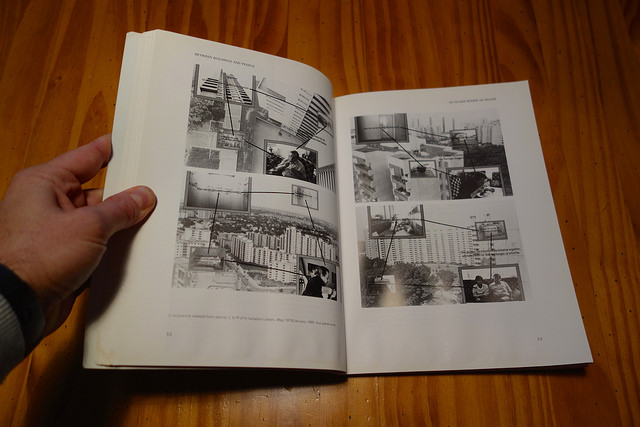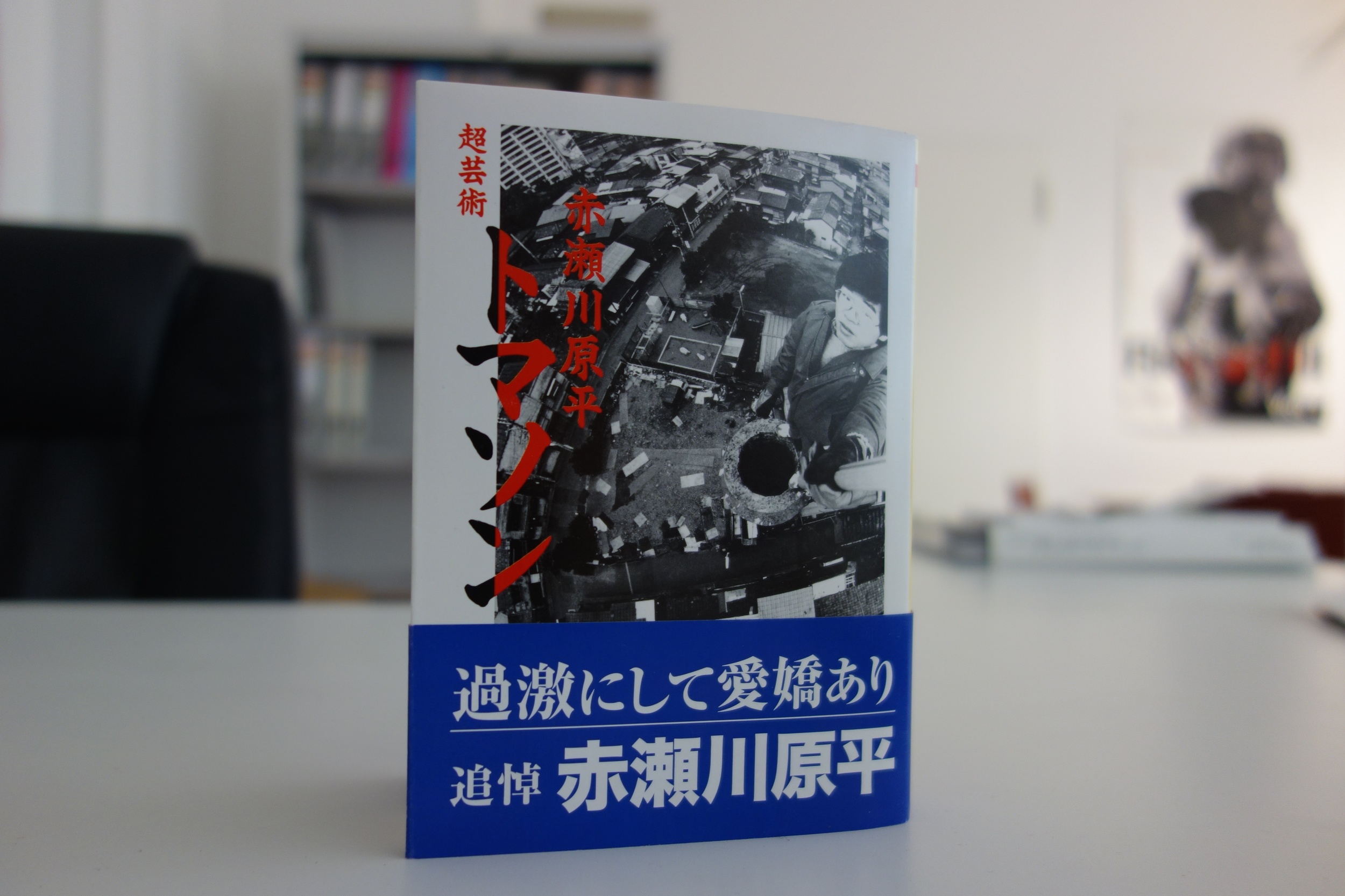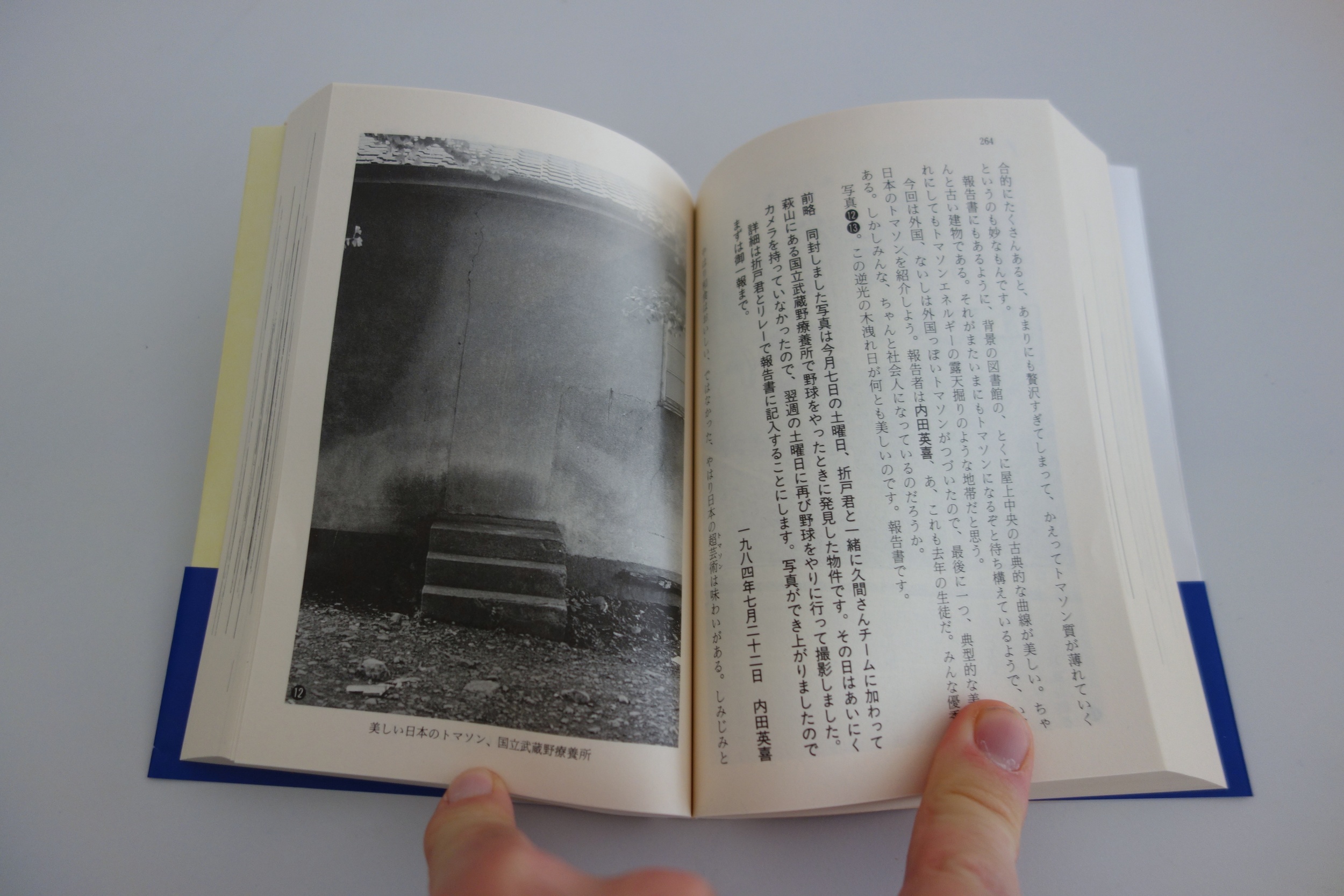Why do I blog this? It's a fascinating quote that I found in the book called "Arts of Living on a Damaged Planet" by Anna Tsing, Heather Anne Swanson, Elaine Gan, and Nils Bubandt (eds.) 2017. I somewhat describes nicely what I think I'm interested in.
observation
Stephen Willats and photographic documentation
Few weeks ago, Joel recommended me the work of Stephen Willats, and more specifically this book called "Between Buildings and People". I found it this week in my mailbox (I've bought a second-hand copy that the owner may have read in his bathtub, hence the concave look on the pics).
Based on a series of interviews, observations and photographic documentation, Willats examines the relationship between people and the built environment. His purpose was to investigate the influence of modernist architecture on people and how it's expressed materially. Although this goal is a tad deterministic for my taste, I find the result fascinating and inspiring. The most interesting bit IMO lays in the ways Willats present the material he produced. See for instance the use of pictures along with interviews, or the diagrams he draw on photographic depictions of the environment:
"Living with practical realities" (1978) is another example of Willat's work that I enjoyed as well:
"Living with Practical Realities was made with an elderly woman who lived on her own in a tower block in Hayes, West London. The work centres on the isolation of the elderly symbolised, physically and socially, by the tower block. This is one of the early works in which Willats used the actual content of audio recordings and his photographic documentations that had been made with the co-operation of the woman, directly within the work"
Living with Practical Realities (Panel One)
Why do I blog this? I'm currently working on a follow-up to the Curious Rituals project. My goal is to investigate people's relationship and use of smartphones (with a focus on gestures). Willat's work is highly inspiring both as a research protocol and as a way to present research results in ethnographic research. The descriptive potential of this work is really interesting. Perhaps it's because of his artist background that I find this more advanced than what I usually see in visual sociology – it might appear non-academic from this POV as Willats do not necessarily follow all the "rules" but it's certainly stimulating.
For instance, I find the image diagrams clearly relevant and insightful. I haven't read the whole book so I'm not sure about the underlying methodology here, but it's compelling. It reminds me another example of design analysis that I find interesting: the use of photomontage and overlay annotation described by Dan Hill for a workshop he did back in 2009:
"last week I tried a technique with them that I've often used myself. Writing on photographs of an average street scene, we asked students to imagine all the data that could be derived from the scene via sensors (in the broadest sense of the word), and then go on to sketch interventions or hacks into those scenes, drawn from such data sources."
While Willat's approach is descriptive, Hill's proposal is projective (it's a design workshop) but both revolves around the idea of annotating images; which I find inspiring an relevant to my own research.
"Thomassons" = architecture relics
This is one of the books I brought by back from Tokyo last week. I don't read Japanese but I noticed that it might be intriguing. Flipping through this tiny booklet, I noticed the use of curious pictures. The architectural structures in Black and White, presented alongside a main essay seemed a bit weird. The only text I could parse – aside from numbers – was the name of the author (Genpei Akasegawa). A little later, with the help of a search engine and the good work of bloggers and podcasters, I managed to get a better sense of the content of this piece.
These images indeed represent what one might call architectural relic or vestigial urban remnants: these structures which have evolved over time to serve no purpose. See for yourself:
According to Roman from 99%, these relics "caught the attention of an artist in Japan named Akasegawa Genpei" back in 1972:
"Akasegawa started noticing similar urban leftovers, and treasured them as artistic byproducts of the city. He photographed all the things he could find that were both vestigial and maintained. He began publishing his findings in a magazine column, accompanied by musings about each object. People began to send Akasegawa pictures of similar architectural leftovers that they found, and in his column, Akasegawa would judge all submissions on two criteria: 1. Were they truly, completely useless? 2. Were they regularly maintained? In 1985 Akasegawa published a book of these collected photographs and writings, in which he coined a term for these kinds of urban leftovers. He called them, 'Thomassons.'
The term comes from Gary Thomasson, an American baseball player who was traded to the Yomiuri Giants, a team in Tokyo, Japan. Thomasson was paid exorbitant amount of money for a two year contract. But in this new country, on this new team, the great slugger Gary Thomasson lost his game. He actually set the all-time strikeout record in Japan in 1981, and was benched for much of his contract. For Akasegawa, Gary Thomasson was “useless” and also 'maintained.'"
Why do I blog this? Thomassons are part of the things I'm interested in when wandering around a city. It's quite extraordinary IMHO to find this concept via a book in a Japanese bookshop without any propre understanding of the local language; but I guess the images were evocative enough to make me buy the booklet. Also, it seems there is an English version of the book. It's called Hyperart Thomasson (published by Kaya Press). Thomassons' seem like a neighbor category of "white elephant": "a possession which its owner cannot dispose of and whose cost, particularly that of maintenance, is out of proportion to its usefulness." (Wikipedia).
I now should go in my Flickr stream and tag the Thomassons I spotted before knowing about this term.
The Institute of Culturetronics : "modular domestic electronics"
I finally found some time last week-end to read the material produced by/for the Institute of Culturetronics. Proposed by Henrik Nieratschker, it's defined as "a framework for an ongoing number of projects and design activities that look at the intersections of local culture and modern technologies, discussing issues of technological development and adaptation as well as the local problematics and opportunities that come with them." The first phase of this observation-based design project is based on a field trip in South Africa.
Why do I blog this? What I find intriguing here is the diversity of material produced for the projects. I take the posters, video, booklet and artifacts as a series of artefacts that encapsulate the design researcher's findings about DIY electronics. It's very interesting from an ethnographic perspective, as a way to illustrate and describe field observations.
The presentation starts from a description of visites sites, along with a series of pictures. It then moves to a section with "personal observations" that reflects – subjectively – on some topics (repair culture, informal economies, etc.) using textual vignettes. Then, this material is turned into prototypes of "modular domestic electronics":
"The electronic products in this proposal exist as modules operated by communities. These modules are owned by the individuals in the community and some members are also involved in the development of new modules that tare then introduced to the community. All the modules are borrowed from individual to individual within the community, so everyone can take advantage of the total sum of possible applications. The system embraces experimentation to widen the total applications and functionalities as far as possible. On the software side the modules are programmable via sound that can easily be cut and rearranged by using a tape recorder and can also be transmitted via radio. This makes it easy to copy and introduce new programs to the community."
Objects from Japan
Spent last week in Tokyo for a workshop. A good opportunity to wander around and run across objects that I found typically from there. A short list, it's definitely a selection, can't be exhaustive.
My favorite, it's pervasive and fascinating. A plastic weight with an handle used to stabilize different things here and there in the City.
Most of the people I've seen used this model of umbrella. They sometimes leaves it in different places.
Umbrellas a pervasive but hats are important too. This one's in a university office, just in case an earthquake appears.
Towels need to be warmed, don't they?
I'm not entirely sure about it but it feels like it's meant to protect the brand new metro ticket you buy at the counter. Lovely design.
The conspicuous vending machines and their touch/SUICA-enabled interface.
This category deserves a whole blogpost/book/encyclopedia. Ah, game controllers.
The frog-like bins are intriguing too.
Why do I blog this? Material culture is fascinating to observe. The design of all these objects is interesting and highlight the way mundane activities are conducted. Such artefacts reflect needs and correspond to expectations or situations... and can act as potential stimuli in workshop/research to show alternative to how things are done/made elsewhere.
Datahotels are the new datawarehouses
A billboard encountered at Haneda Airport in Tokyo this week. I find it interesting to observe the criteria chosen by the cloud company: we understand here that the service should be easy and that a reliable support might exist (24 hours). This looks quite common in the tech industry. However, I find the two others characteristics quite intriguing: "public cloud" and "system architect" sounds a bit abstract and strange. Perhaps the latter corresponds to the idea of a well-designed system, but I wonder about the notion of "public cloud" itself: what does that mean? Although it might suggest a public access to data, it may consist in something else (perhaps there's a Japanese thing I'm missing here) as it's difficult to sell people a service where all your data are made public.
The graphic design of this ad is also revealing: the blue evocation of the sky – would a cloudy sky be too much in an ad? –, the rolling cloud which looks like seawaves drawn out of a Saint Seiya episode, the use of white fonts, and a logo that reminds of the Air France logotype's comma. That's how a complex technology is presented here. Perhaps one needs ai aircraft carrier's mindset to manage data in the cloud.
And finally, the name is also revealing. "Datahotel" is the new "Datawarehouse". The vocabulary is important here. Our data are now taken care of in an hotel; with a dedicated type of services (and their "system architect"). What's next? Datahavens? Dataheavens? or shall we return to the cyberpunk data-banks from the 80s (only accessible via Ono-Sendai's consoles)?
Why do I blog this? Working on a Cloud Computing project makes me curious of how things are communicated in this domain. As shown here, the whole cloud metaphor is utterly weird and quite disconnected from the infrastructure these services rely on.A blank billboard seen in Paris.
Green background for VFX?
The green (and sometimes blue) blank billboards in the corridor of the Paris subway are always fascinating to me. It feels like the sudden backdrop for virtual effects. I guess there's a reason for this but this possibility leaves me curious about its potential.
Possibly more intriguing than boring Augmented Reality apps.
Lausanne, Switzerland
Lucky charm assemblage
A fascinating assemblage – a five Swiss francs coin duct taped to a calculator – spotted at a bubble tea place in Lausanne few weeks ago. When asked about the meaning of this, the waiter told me that "the owner is from Taiwan and she's quite superstitious"... which is a good explanation for this coin-based lucky charm that I found interesting.
Why do I blog this? I like the low-tech character of this obviously, and lucky charms are generally low-tech, but the combination of plastic, duct-tape and metal is very interesting. I wonder about similar approach with smartphones, laptops and other digital artefacts. Are we going to see smart-watches turned into lucky charms with weird materials? Seing this, I'm pretty convinced that it's going to be the case.
queue norm
A fascinating line observed in Montreal, QC.
Why do I blog this? Simply because it highlights a cultural use of space that is different than other places.





















